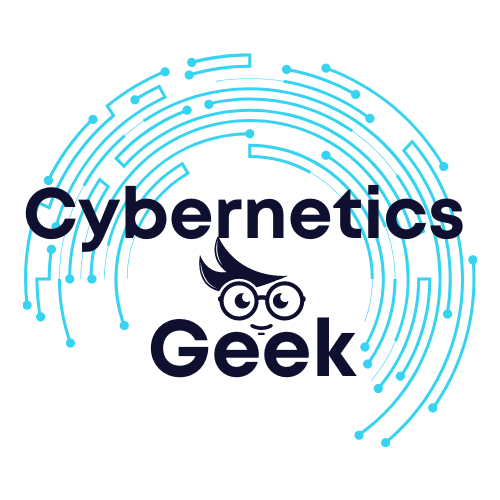In today’s digital landscape, protecting your sensitive files is more critical than ever. Encryption is one of the most effective tools you can use to safeguard your data, ensuring that even if unauthorized individuals access your files, they won’t be able to read or use them.
What is Encryption?
Encryption is converting readable data (plaintext) into an unreadable format (ciphertext) using a cryptographic algorithm. The data can only be decrypted and accessed with the correct decryption key or password.
Why Encrypt Your Files?
Encryption is essential for protecting sensitive data, including:
- Personal Information: Tax records, IDs, and medical files.
- Financial Data: Bank statements, credit card details, and investment records.
- Business Documents: Client contracts, proprietary information, and employee records.
Your data is vulnerable to theft, breaches, and unauthorized access without encryption.
Key Benefits of File Encryption
- Prevents Unauthorized Access:
- Even if files are stolen, they remain unreadable without the encryption key.
- Protects Data in Transit:
- Encryption secures files when shared via email, cloud storage, or external drives.
- Meets Compliance Requirements:
- Many industries, such as healthcare and finance, mandate encryption to comply with data protection regulations.
- Provides Peace of Mind:
- Knowing your sensitive files are secure reduces anxiety about potential breaches.
How to Encrypt Files
Encryption can be applied to individual files, folders, or entire drives. Here’s how to get started:
- Use Built-In Tools
Most operating systems offer built-in encryption features:
- Windows (BitLocker):
- Encrypt entire drives or specific files using BitLocker. To encrypt a file:
- Right-click the file > Properties > Advanced > Check “Encrypt contents to secure data.”
- macOS (FileVault):
- FileVault encrypts your entire disk. Enable it by going to System Preferences > Security & Privacy > FileVault.
- Linux:
- Use tools like LUKS (Linux Unified Key Setup) for disk encryption.
- Third-Party Encryption Software
For more advanced options, use dedicated encryption tools:
- VeraCrypt: Free and open-source software for encrypting files, folders, and drives.
- AxCrypt: Ideal for encrypting individual files with ease.
- 7-Zip: Encrypts files and folders using password protection.
- Encrypt Files in the Cloud
Some cloud storage services offer encryption for uploaded files. Examples:
- Google Drive: Encrypts data in transit and at rest.
- Dropbox: Adds encryption but doesn’t control end-to-end encryption. For maximum control, encrypt files locally before uploading them to the cloud.
- Password-Protect Documents
Many software programs, like Microsoft Office and Adobe Acrobat, allow you to encrypt files by setting a password. For example:
- In Word: File > Info > Protect Document > Encrypt with Password.
Best Practices for File Encryption
- Use Strong Passwords:
- Encryption is only as secure as the password you choose. Use a combination of letters, numbers, and symbols.
- Store Keys Securely:
- If you use a software tool that generates encryption keys, ensure they’re stored securely, such as in a password manager.
- Regularly Update Encryption Tools:
- Outdated encryption software may have vulnerabilities that hackers can exploit.
- Backup Encrypted Files:
- Store backups of encrypted files in a secure location to avoid losing access in case of key loss or corruption.
- Verify Before Sharing:
- When sending encrypted files, securely share the decryption key or password (e.g., not in the same email as the file).
Common Misconceptions About Encryption
- “Encryption is Too Complicated”:
- Modern tools make encryption user-friendly, often requiring just a few clicks to secure files.
- “Encryption Slows Down My Device”:
- While encryption adds some overhead, it’s negligible on modern systems.
- “Only Tech Experts Need Encryption”:
- Everyone has sensitive data worth protecting, from personal photos to financial records.
- “Encryption is Foolproof”:
- Encryption is highly secure, but it’s not invincible. Strong passwords and updated tools are necessary to maintain its effectiveness.
When Should You Encrypt Files?
- Storing Sensitive Data:
- Encrypt files that contain personal, financial, or professional information.
- Sharing Files Online:
- Always encrypt files before sending them via email or uploading to the cloud.
- Using Portable Storage Devices:
- Encrypt USB drives or external hard drives to protect data if the device is lost or stolen.
- Traveling:
- Encrypt your laptop or smartphone to prevent data theft during travel.
The Role of Encryption in Cybersecurity
Encryption is a cornerstone of modern cybersecurity, protecting data at rest and in transit. It complements other measures like firewalls, antivirus software, and two-factor authentication, providing a comprehensive defense against threats.
Conclusion
Encrypting sensitive files is one of the most effective ways to secure your data in a world full of digital threats. It’s easy to implement, versatile, and essential for anyone who values privacy and security.
Take action today: identify and encrypt your most sensitive files using the methods outlined here. By doing so, you’ll gain peace of mind knowing that your data is safe, no matter the challenges. Remember, in cybersecurity, protecting your files with encryption isn’t just a precaution—it’s a necessity.
